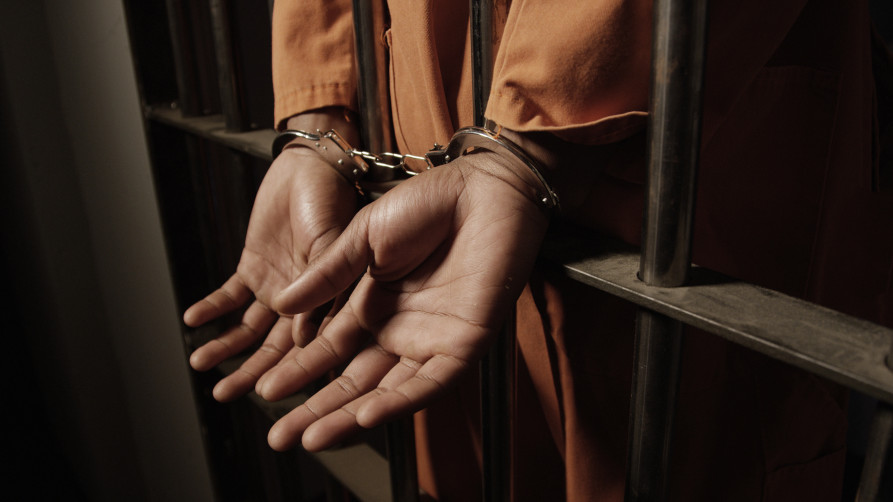
The pandemic has made many American prisons even worse
Incarcerated people were four times more likely to catch coronavirus and twice as likely to die from it.
America, like many other countries, has made substantial changes to the way society is structured in order to combat the Covid-19 pandemic. For almost two years people have been instructed (and sometimes compelled) to avoid crowded, indoor and poorly ventilated spaces. Well, most people. When it came to Americans who were incarcerated, most were forced to remain in buildings that are much better at restricting human beings than respiratory viruses.
The results weren’t surprising. Prisons (which in America are for convicted criminals), jails (which are for those who have been charged but not yet convicted, or who are serving short sentences for minor crimes) and immigration detention centres all became hotbeds of infection. Infection rates in prisons were four times the national average, and death rates were double that of the general population. Some institutions, like Rikers Islands in NYC, have also faced massive staff shortages, as guards and other employees call out sick because they have Covid, have been exposed to Covid, need to care for someone with Covid, need to look after children whose schools have been closed due to Covid, or are worried about catching Covid.
Initiatives and regulations aimed at reducing the spread of Covid in correctional facilities were introduced, but these varied widely by state and were considered patchy by many. The measures took several forms. Some attempted to stop new people coming into contact with prison populations and potentially bringing Covid with them. Friends and family visits were made virtual, for example, and some transfers of people from jails to prisons were delayed.
Other measures aimed to reduce the number of people locked up, which would both make facilities less crowded and reduce the number of people who were living in high-risk facilities. Thousands of incarcerated people were released early, especially from jails, and some states stopped arresting people for minor violations of the law. However, the overall number of people released from prison was not significant. In fact, most parole boards granted fewer releases in 2020 than 2019. Covid regulations also led to some of the procedures that can lead to a prisoner’s release being delayed. Staff shortages meant there weren’t always people available to escort prisoners to things like court hearings, for example, and court sessions and parole meetings were also sometimes cancelled to comply with stay-at-home orders.
A third raft of measures focused on improving prison medical care. In particular, a lot of states paused their medical copay policies for prisons. Co-pays are set costs that prisoners have to pay for any medical service they receive, such as prescriptions or doctors appointments. Co-pays generally cost a few dollars, but because work undertaken in prisons pays just a few cents an hour, co-pays are unaffordable for many incarcerated people. A few states also prioritised prisoners for vaccinations when they first became available… although many more did not.
One of the reasons many of these measures felt so hodgepodge to many is because they had to encompass several contrasting ideals and values about how we should treat people who end up in the justice system. Americans who think the primary purpose of the system is punishment - and those who are incarcerated are generally ‘bad guys’ - may think releasing such people early, pandemic or not, is at best a reward for bad behaviour and at worst a security risk to society. They may also object to incarcerated people being prioritised over law-abiding citizens for things like life-saving vaccines.
In contrast, Americans who regard the justice system as a cruel, racist, and overly-punitive tool that is primarily used to strip freedom and opportunities from poor, non-white and/or mentally unwell young men are likely to find both the increased Covid-risk of correctional facilities and the removal of more prisoner rights (like being able to see loved ones in-person) as yet another example of the horrific failures of the system and yet another reason to fundamentally reform or abolish it. These people may think mass releases were not just justified, but a moral necessity. And of course many Americans sit somewhere in the middle of this opinion spectrum - they may support decriminalising all drug-possession, but balk at providing extra medical care to Death Row inmates, for example.
However, where the second camp may have a slight edge in the debate is the fact that the infectiousness of Covid changes the calculation about who benefits or loses when Covid runs rampant in correctional facilities. That's because these institutions aren’t closed systems - even ignoring newly admitted/released prisoners, there are always employees, vendors, and service people constantly coming and going. The odds that one of these people will catch and then inadvertently carry Covid out with them rises alongside the prevalence of Covid inside the facility. Indeed, studies reckon hundreds of thousands of non-incarcerated people caught Covid because of bad outbreaks in prisons and jails.
This means that reducing Covid risk in correctional facilities, and improving the medical care - including vaccines - that is available to imprisoned people would also protect larger sections of society from ill health... and all the economic consequences that come with it.
Read our explainer on: legal institutions.



